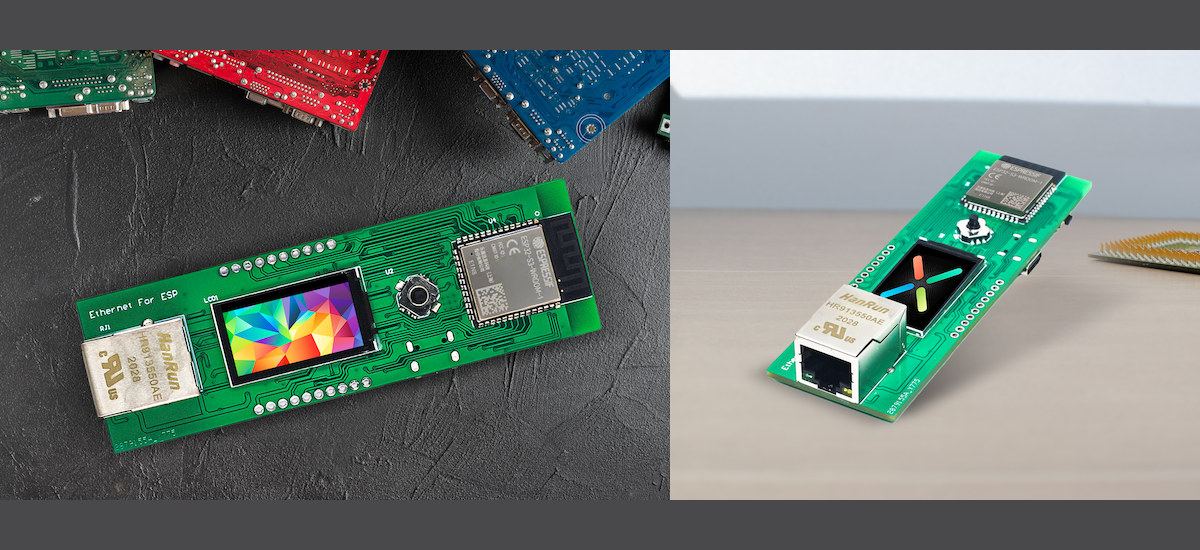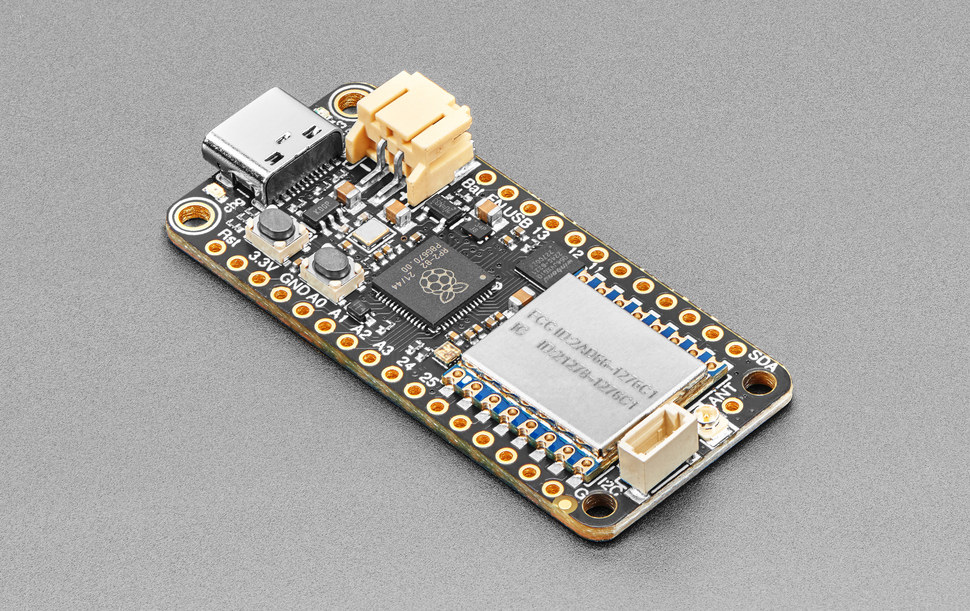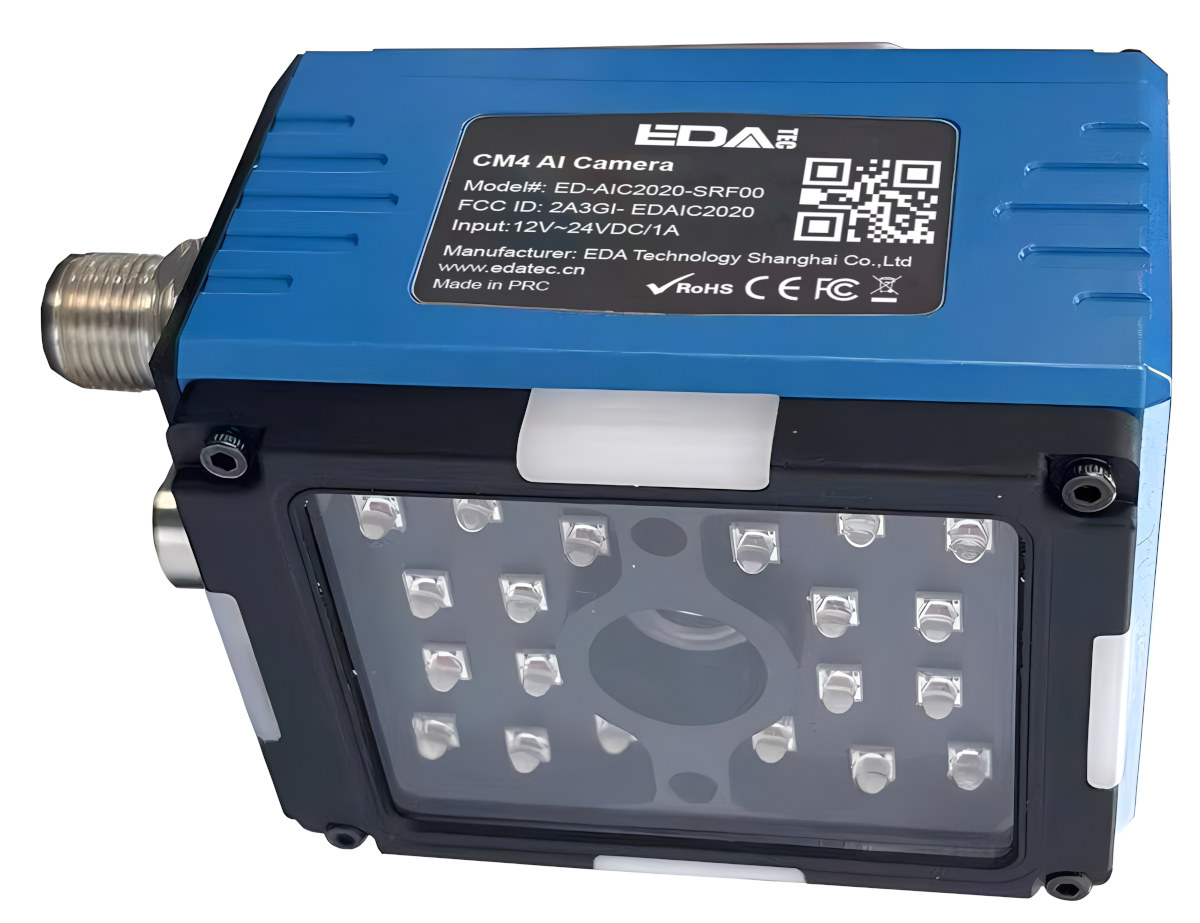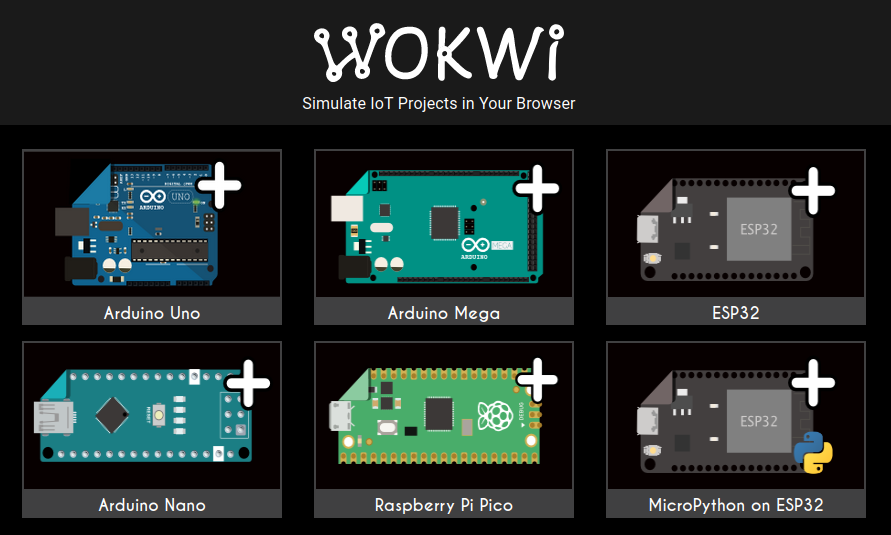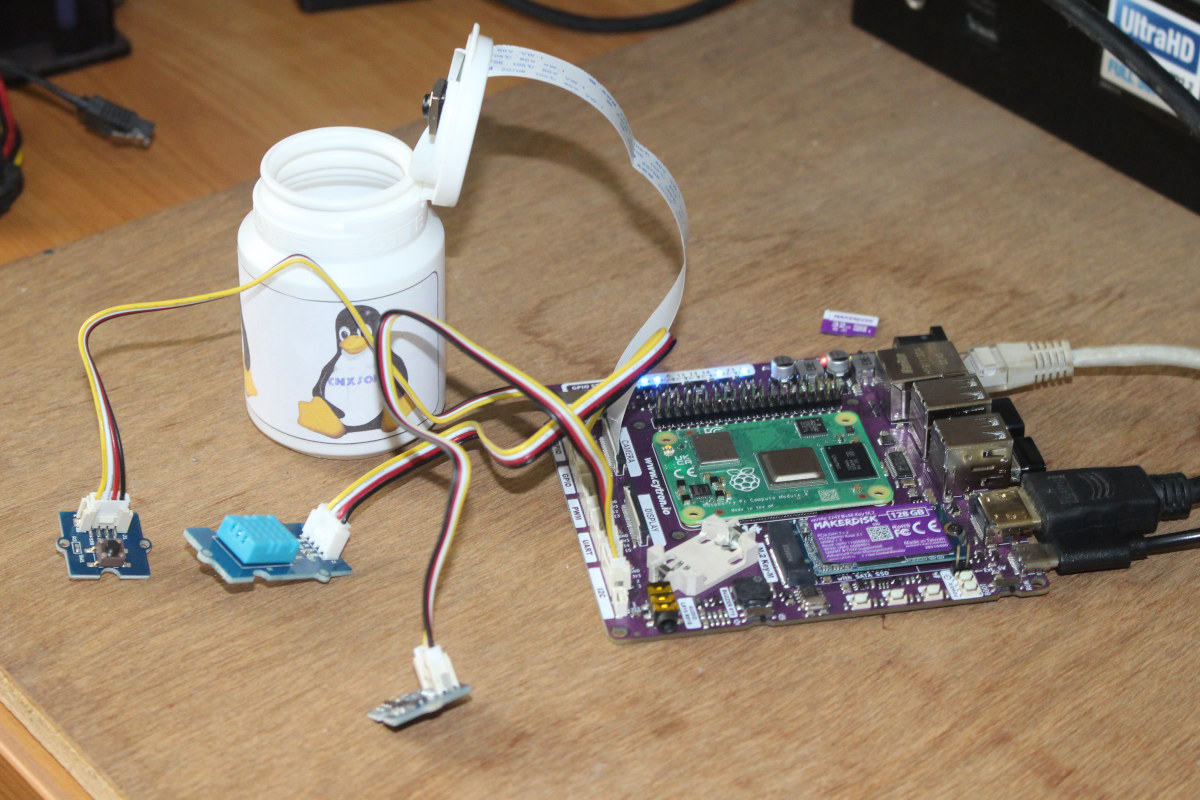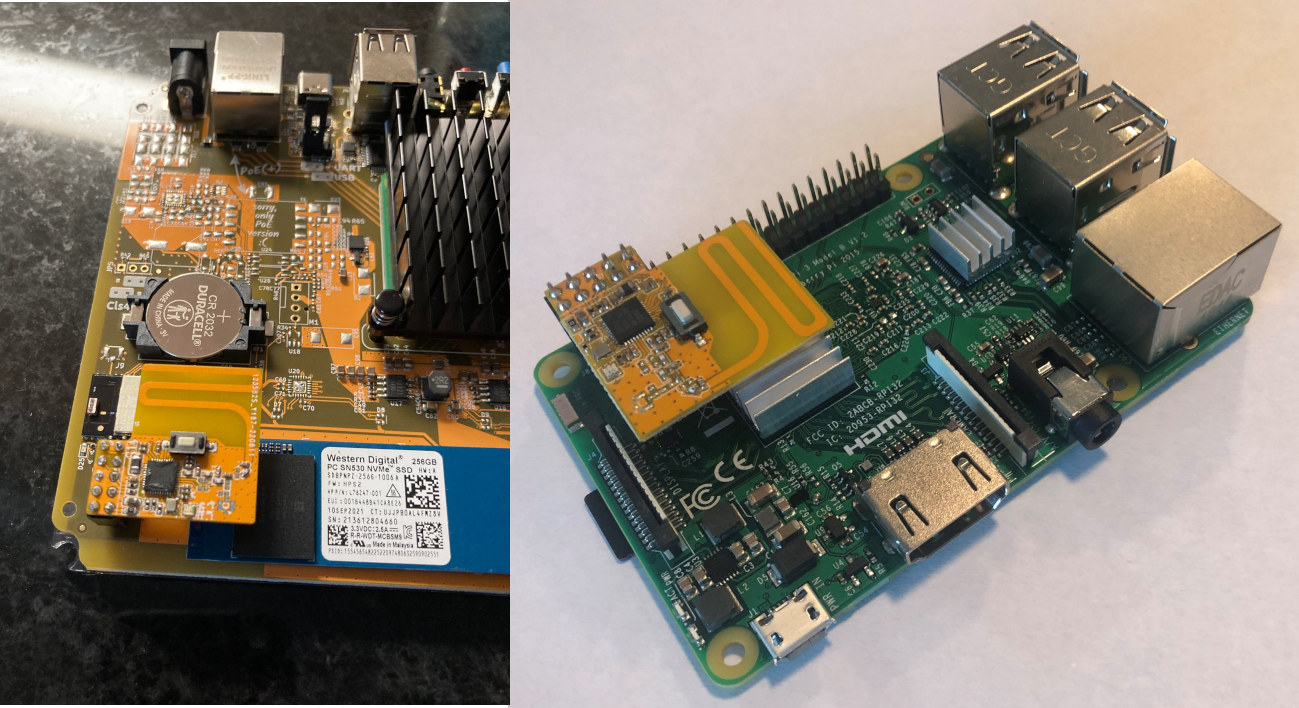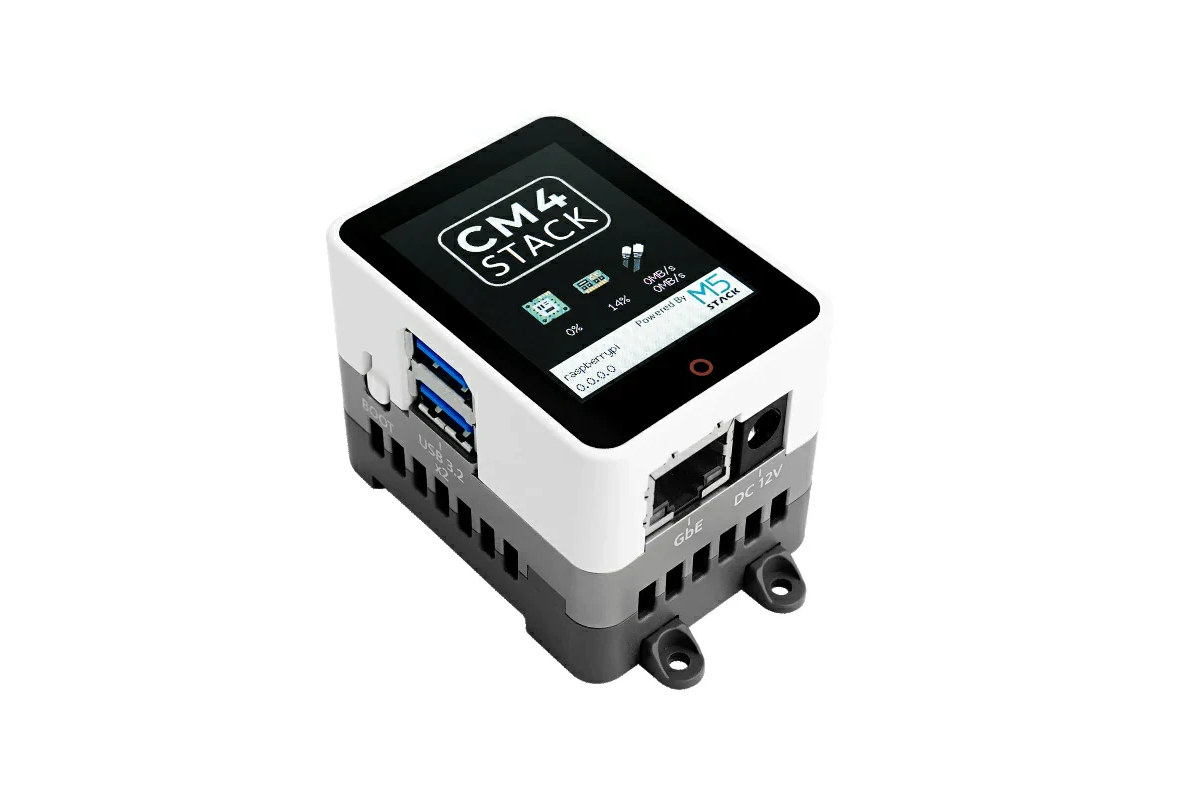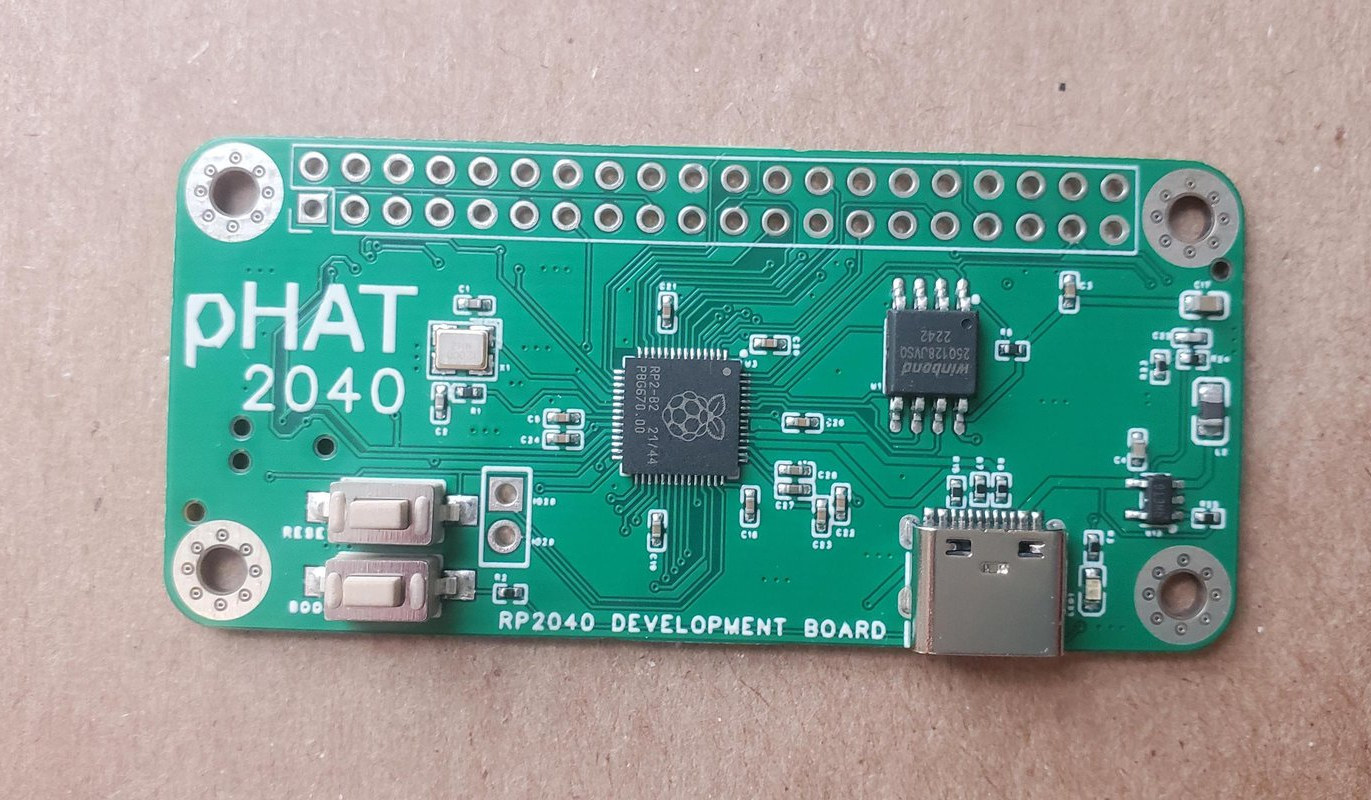SB Components’ ESPi is a WiFi-enabled Ethernet board with a 1.14-inch information color display either coming with an ESP32-S3 WiFi and Bluetooth module or designed as a carrier board for the Raspberry Pi Pico W board. I have no idea who needs this, but the ESPi board looks cute and can be used as a 10/100Mbps Ethernet to WiFi (or BLE) gateway with a small TFT display, and there’s also a small joystick on the board to control a potential menu or user interface rendered in the display. ESPi board specifications: Module/Board (one or the other) ESP32-S3-WROOM-1 module with ESP32-S3 dual-core LX7 microprocessor @ up to 240 MHz with Vector extension for machine learning, up to 16MB flash, up to 8MB PSRAM, WiFi 4, and Bluetooth 5 with LE/Mesh Raspberry Pi Pico W board with Raspberry Pi RP2040 dual-core Cortex-M0+ microcontroller @ 133 Mhz with 264KB RAM, 8MB SPI flash, […]
Adafruit Feather RP2040 with RFM95 LoRa Radio launched for low power long range IoT communication
Adafruit has designed a new variant of the Feather RP2040 board with the “Adafruit Feather RP2040 with RFM95 LoRa Radio” featuring a 900 MHz RFM95 “RadioFruit” module and following the “Adafruit Feather RP2040 with DVI Output Port” that we covered last week. The board ships with 8 MB of QSPI flash, supports USB-C or LiPo battery power, is offered in the familiar Feather form factor, and the built-in RFM95 module supports 433 MHz, 868MHz, and 915MHz frequencies, selectable by firmware, for global coverage. Adafruit Feather RP2040 with RFM95 LoRa Radio specifications: MCU – Raspberry Pi RP2040 dual-core Arm Cortex M0+ microcontroller @ 133 MHz with 264 KB RAM Storage – 8MB SPI flash RFM95 LoRa wireless module Semtech SX127x LoRa transceiver Frequency bands – License-free ISM bands: ITU “Europe” @ 433MHz and ITU “Americas” @ 900MHz. (CNXSoft: it looks 900 MHz here means 868 MHz (EU) and 915 MHz (US), […]
IP67-rated CM4 AI camera uses Raspberry Pi Compute Module 4 for computer vision applications
EDATEC ED-AIC2020 is an IP67-rated, Raspberry Pi CM4-based industrial AI camera equipped with a fixed or liquid lens and LED illumination that leverages the Raspberry Pi Compute Module 4 to run computer vision applications using OpenCV, Python, And Qt. We’ve previously written about Raspberry Pi Compute Module-based smart cameras such as the Q-Wave Systems EagleEye camera (CM3+) working with OpenCV and LabVIEW NI Vision and the StereoPi v2 (CM4) with stereo vision. But the EDATEC ED-AIC2000 is the first ready-to-deploy Raspberry Pi CM4 AI camera we’ve covered so far. EDATEC “CM4 AI camera” (ED-AIC2020) specifications: SoM – Raspberry Pi Compute Module 4 up to 8GB RAM, up to 32GB eMMC flash Camera 2.0MP global shutter or 5.0MP rolling shutter Acquisition rate – Up to 70 FPS Aiming point – Red cross laser Built-in LED illumination (optional) Scanning field Electronic liquid lens Fixed focal length lens Networking Gigabit Ethernet M12 port Communication protocols – Ethernet/IP, PROFINET, Modbus […]
Wokwi – An Arduino, Raspberry Pi Pico, and ESP32 board simulator
Wokwi is an online simulator for Arduino, Raspberry Pi Pico, and ESP32 boards, or even your own custom microcontroller board designed to learn programming without the actual hardware. My girlfriend’s daughter has just attended a free 5-day online course about AI, IoT, ESP32, MicroPython, and more organized by King Mongkut’s Institute of Technology Ladkrabang (KMITL) and IMAKE Innovation, a STEM education company in Thailand. I was told they had some homework for ESP32 as part of the course, so I asked her whether she wanted an ESP32 board. But she said no need. So then I asked how to program the ESP32 without the board, or do they have a simulator? And indeed I was sent the screenshot below along with a blurry video showing the LED display updated as the program runs in the web browser. Considering ESP32 boards are so cheap and external modules or a breadboard are […]
Cytron CM4 Maker Board review – Part 2: NVMe SSD, RTC, Buzzer, Grove modules, ChatGPT…
We’ve already checked out Cytron’s CM4 Maker Board kit with a Raspberry Pi CM4 system-on-module and booted the system with the included 32GB “MAKERDISK” Class 10 microSD card preloaded Raspberry Pi OS in the first part of the review. For the second part of the CM4 Maker review, I’ve mostly used the 128GB NVMe SSD provided by the company and played with other features of the board including the RTC, the buzzer, some Seeed Studio grove modules, and even got help from ChatGPT for one of the Python programs I used. Booting Cytron CM4 Maker Board with the “MAKERDISK” NVMe SSD I connected several Grove modules with GPIO and I2C interfaces, a Raspberry Pi Camera Module 3, an Ethernet cable, two RF dongles for a wireless keyboard and mouse, an HDMI cable to a monitor, and finally inserted the provided 5V/3.5A USB-C power adapter. The MAKERDISK SSD comes with Raspberry […]
Add Z-Wave LR (Long Range) to Raspberry Pi or Home Assistant Yellow with Zooz 800 Series USB stick or GPIO Module
We wrote about the new Z-Wave Long Range (LR) standard aka “Z-Wave Plus LR” promising four times the range and 10-year battery life in September 2020 but hadn’t heard much about it since then, at least until now, as Zooz has launched the ZST39 LR USB Stick and ZAC93 LR GPIO module based on a Z-Wave 800 Series chip, with the GPIO module compatible with Home Assistant Yellow and Raspberry Pi SBCs. Zooz 800 Series Z-Wave Long Range GPIO Module ZAC93 LR ZAC93 LR specifications: Z-Wave Frequency – 908.42 MHz (US, CA, MX) / 921.4 MHz (AU, NZ) / 868.42 MHz (EU) Wireless Range – Up to 1 mile/1.6 km in open space with Long Range enabled (up to 300 meters in open space, up to 76 meters indoors in traditional mesh networks) Support for up to 200 devices in a single network Host interface – 10-pin header to Raspberry […]
M5Stack CM4Stack – A tiny Raspberry Pi CM4 Linux computer with an integrated 2-inch display
M5Stack CM4Stack is a tiny Arm Linux mini PC based on Raspberry Pi CM4 that measures 59 x 44 x 46mm and integrates a 2-inch touchscreen display for information and control, as well as the usual ports you’d expect from a mini PC such as HDMI, USB 3.2 ports, Gigabit Ethernet, and so on. We’ve previously written about M5Stack Core and Atom controllers based on ESP32 microcontrollers, an optional 2.0-inch display, and a few GPIOs. The company has now decided to provide a similar solution with a jump in performance and interfaces with the CM4Stack development kit. CM4Stack specifications: SoM – Raspberry Pi CM4 (CM4104032) with SoC – Broadcom BCM2711 quad-core Cortex-A72 processor @ 1.5 GHz System Memory – 4GB RAM Storage – 32GB eMMC flash Wireless module with 802.11 b/g/n/ac WiFi 5 and Bluetooth 5.0 Integrated display – 2.0-inch LCD with ST7789V2 controller, touchscreen function Video Output – HDMI […]
Raspberry Pi RP2040 pHAT board comes with a 40-pin GPIO header
0xC0FFEE’s RP2040 PHAT is both a Raspberry Pi RP2040 development board and a pHAT for Raspberry Pi and Pi Zero Linux SBCs that exposes the I/Os through the 40-pin GPIO header traditionally found in Raspberry Pi single board computers. The board comes with all features of the Raspberry Pi Pico board including a USB port for power and programming, an SPI flash, and a BOOT button, but also adds a Reset button. That means it’s software compatible, except for the user LED connected to GPIO 26, and works with the MicroPython and C SDKs, as well as the Arduino IDE, Zephyr RTOS, and more. RP2040 pHAT specifications: MCU – Raspberry Pi RP2040 dual-core Cortex-M0+ microcontroller @ 133 MHz with 264KB SRAM Storage – 128Mbit SPI flash (based on the chip in the photo above) USB – 1x USB 1.1 Type-C port used for power and programming Expansion – 40-pin Raspberry […]


